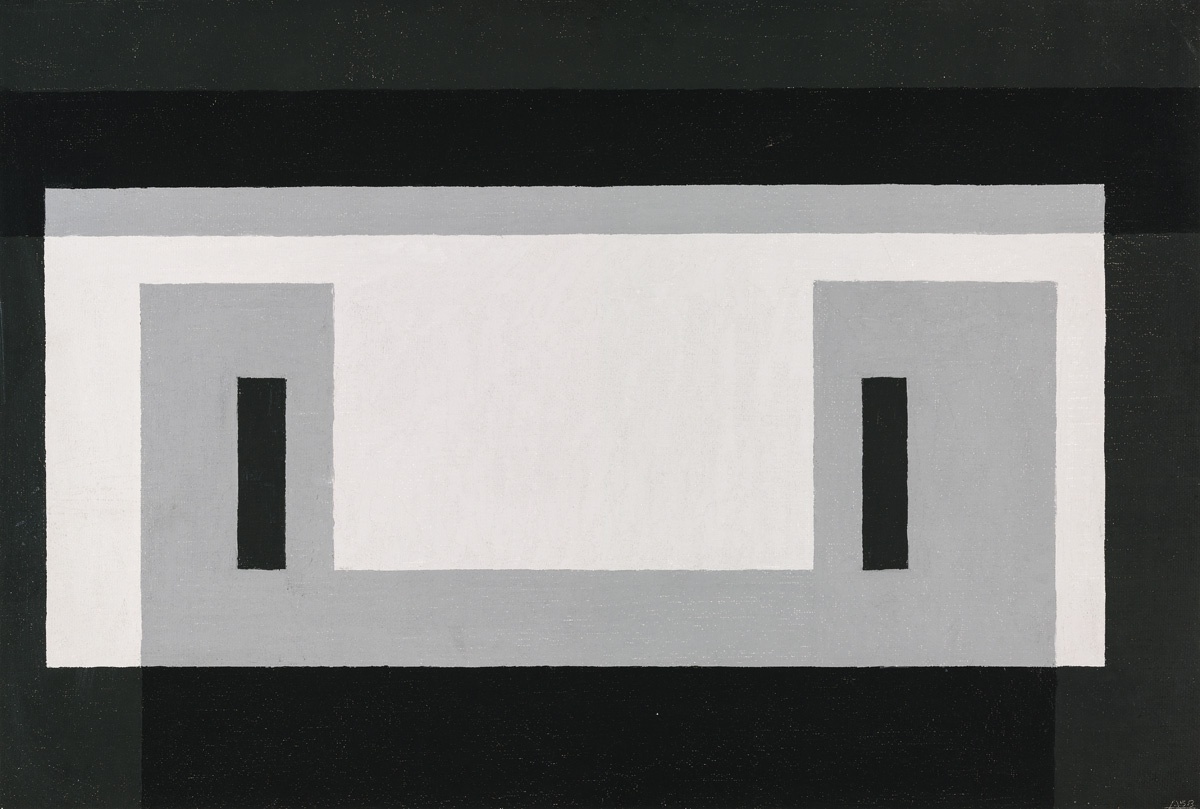Josef Albers is one of the most important proponents of geometric abstraction, and his activity as an artist is inseparable from his influential work as a teacher. In the 1920s he taught in the Bauhaus, and after it was closed in prestigious American universities such as Black Mountain College, Harvard and Yale. He summarized his courses in colour theory in 1963 in his book The Interaction of Color.The Light Grey Wall is closely related to Albers’s theoretical research. It is a sequel to the Adobe series, the idea for which came to him in Mexico in 1947. This is a long line of colour variations, on a geometric pattern made of the same repeated horizontal and upright rectangles, like the puritan Mexican adobe houses. The interaction of colours and forms sets the apparently static composition into motion. The two ’windows’ seem sometimes to approach, and then to recede. The planes and fields of colour open as a seemingly infinite deep space, then close like a solid wall. Though the glowing reds and cool deep blues are here replaced by various shades of grey, the image is just as intense as in the preceding series.Albers considered his pictures to be objects of meditation, which challenge the manner of human perception, activate vision and ’open eyes’. This is well illustrated by the Light Grey Wall, which creates a playful teasing between the viewer’s gaze and the picture surface. ’Art is not to be looked at; Art is looking at us,’ as the artist wrote in his ars-poetica poem. Dávid Fehér
en

